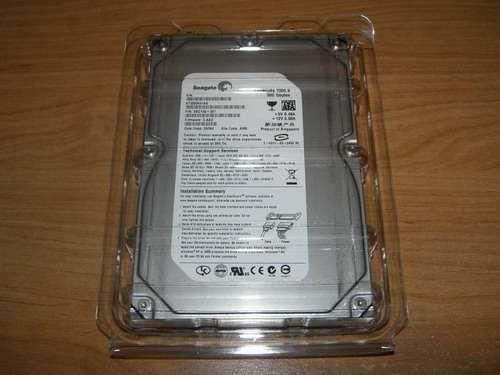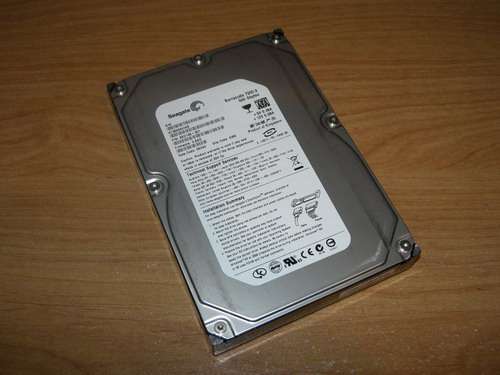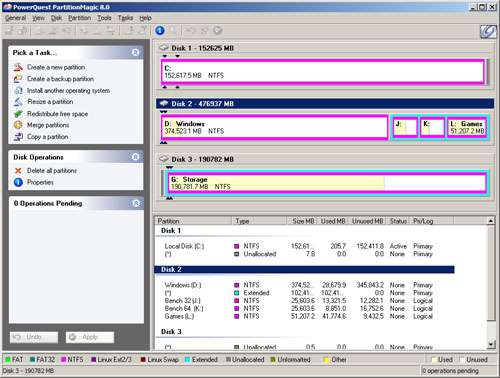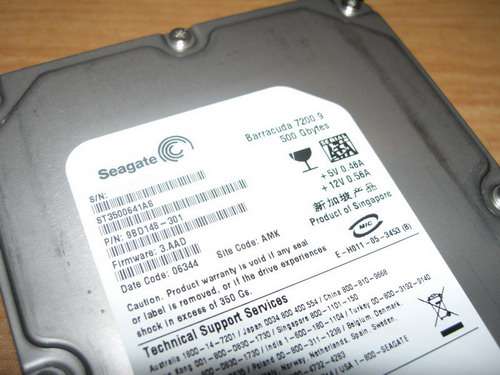- Qualcomm Launches Snapdragon 4 Gen 2 Mobile Platform
- AMD Launches Ryzen PRO 7000 Series Mobile & Desktop Platform
- Intel Launches Sleek Single-Slot Arc Pro A60 Workstation Graphics Card
- NVIDIA Announces Latest Ada Lovelace Additions: GeForce RTX 4060 Ti & RTX 4060
- Maxon Redshift With AMD Radeon GPU Rendering Support Now Available
Seagate 500GB Barracuda 7200.9
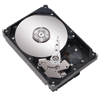
There seems to be a problem that’s constant with computers throughout the years. That problem is not enough storage space to feed our habits. Whether or not you actually need *this* much storage, there’s no denying it’s supremeness.
Page 1 – Introduction
Seagate is a company that’s been around for quite a while, but their presence is becoming more and more intact as the days go by. A week doesn’t seem to go by without seeing their name in the news. A few months ago, we took a look at their 160GB mobile beast, the Momentus 5400.3. Even though that HDD came out months ago, it is still the largest 2.5″ drive on the market, and has no competition.
Just last week, they also released their massive 750GB desktop consumer drive which once again takes the top spot. If you are curious as to how they managed to fit so much data into the same sized frame, you can read our explanation here. So you may be asking yourself.. why are you reading a 500GB review when there is a far superior, and large hard drive already on the market? Well, according to current $ per GB calculations, the 500GB costs around $0.12 per GB less than the 750GB. That’s pretty substantial.
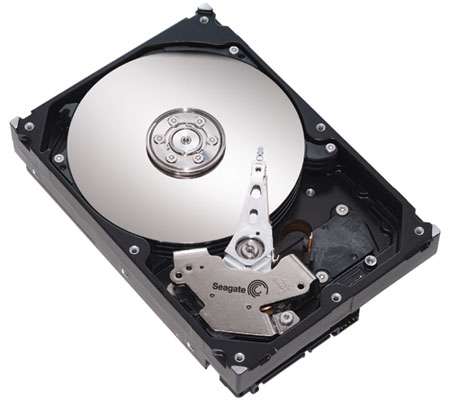
Back in the day.. I remember buying a brand new 8GB HDD for only $300, or around there. At that time, it was actually more than enough. I was able to install all of my games and applications, and still have plenty of space left over. It was a common theme, that after buying a new hard drive, it would easily be able to satisfy you. That was before digital entertainment became such a stature in our daily lives though. In a day where music collections can amount to hundreds of GB’s, games can take 10GB for a simple complete install, and DVD movie backups are second nature, we are always looking for more, and more storage.
Even just a few years ago, the thought of your computer having 1TB (Terabyte) of hard drive space was ridiculous to consider. Of course, it’s hardly ridiculous anymore, and all you need are two of these drives we are looking at today. Of course, due to the 1024 byte issue, the drive is around 500,000,000,000 bytes, or 476,937MB. After the benchmarking and testing was completed, I took a shot of the drive using PartitionMagic, to show the total size.
I doubt I will need to get into the nitty gritty of what a hard drive is, or how it works. What does this drive do that some other’s don’t? Well, not too much really. Unlike the new 750GB drive, this one does not use the new Perpendicular Magnetic Recording, simply because it has no need to. Shared by other Seagate drives is the NCQ feature, or Native Command Queueing. Essentially this is technology that allows the hard drive to receive more than one I/O request at a time, and performs them in an order that it deems best. This feature is available on their S-ATA drives only, so the ATA version of this drive will not include it.
This drive is also equipped with a 16MB Cache and a S-ATA 3GB/s capability. 7200RPM has been the norm in terms of drive speeds for a while, and it seems to be staying that way for the time being. You’ll also notice mention of a 3-D Defense System, though I really have no clue what it is. It’s related to data protection, but a search at the Seagate website brought forth no help.
- SATA 3Gb/s with NCQ
Higher through-put and supports Intel Hyper-Threading for increased performance of SATA servers and workstations supporting intensive applications. NCQ also increases reliability in heavy workloads significantly reducing the drive’s mechanical wear. - 16 MB Cache
Provides the highest performance with increased data bursting through the interface - 2.8 bels idle, 3.2 bels seek acoustics
Super-quiet drive is almost inaudible. Difference between idle and seek can hardly be detected by human ear, making drive operation almost silent. - 3-D Defense System
Industry’s most comprehensive drive and data protection system - 7,200 RPM
Higher performance and data through-put - 63 Gs operating shock
Robust product for challenging applications - 350 Gs non-operating shock
Top reliability and durability during shipment and integration - RoHS Compliant
Meets or exceeds all current and proposed environmental standards and legislation
I received an OEM version of the drive for review, so there is no retail box. After tearing the bubble wrap off, it revealed the drive in a plastic blister case. This case is designed in a way to allow for some safety if you do happen to drop it. It bubbles out at various points all over, so if it hits the ground, there’s a good chance not too much damage will be done.
As mentioned earlier, this is the S-ATA version of the drive, although the ATA version shares the same stats and latencies. Without further ado, let’s get into the testing. )
|
|
Support our efforts! With ad revenue at an all-time low for written websites, we're relying more than ever on reader support to help us continue putting so much effort into this type of content. You can support us by becoming a Patron, or by using our Amazon shopping affiliate links listed through our articles. Thanks for your support!




